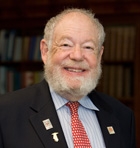|
The Super Bowl isn’t just a mainstage for football’s two best teams. With over 100 million viewers tuned in, and 30-second spots going for more than $5 million, the big game also represents one of the highest stakes advertising events of the year. Harvard Business School turned to three marketing experts to weigh in on 2018’s top spots. 
Jill AverySenior Lecturer of Business Administration2017 was a somber and contentious year for the US. So it came as no surprise on Super Bowl Sunday to see marketers compile a laundry list of American anxieties and then offer their products as salves to help relieve them. Brands were looking to reassert traditional American values like inclusion and the celebration of differences in the face of more negative recent trends like anti-immigrant and anti-LGBTQ+ sentiment. That said, most advertisers treaded lightly in their storytelling to appeal to the large, heterogeneous audience of the Super Bowl and avoid appearing too red or too blue. At the same time, they did allow their points of view to subtly seep into their messaging. For example: Brands such as Coca-Cola, Kraft, T-Mobile, and Toyota painted a picture of what they believe America was, is, and should be: diverse, tolerant, open-minded, and stronger as a result of our differences. Others such as Budweiser, Stella Artois, and Hyundai subtly pointed to the failures of government and societal fallout from funding cuts, inaction caused by political partisanship, and/or conscious neglect, as they presented their brands as heroic substitutes stepping in to provide services (e.g., clean water, cancer research funding) traditionally provided by nations, states, and/or NGOs. Still others such as Sprint and Amazon used humor to engage the public’s interest and underscore its anxiety regarding artificial intelligence, playing with themes of machines with minds of their own, the loss of privacy, and the rise of false intimacy that technological advances are bringing to American culture. Although these narratives accurately reflected anxieties of the American audience, many of the brands failed to create stories that passed the acid test of good advertising—to create meaning that adds value for consumers and spur those who don’t use the products to action. That made for many ads that were effective at gaining the audience’s attention and empathy, but that failed to offer a compelling reason to believe in and purchase the product. A notable exception was an ad for E-Trade that deftly used many Americans’ post-Great Recession concerns about the safety of their retirement savings as the basis for a humorous message about this financial services company as a safe option. 
Stephen A. GreyserRichard P. Chapman Professor of Business Administration, EmeritusAlmost half of US television households (some 200 million eyeballs) watched a very exciting football game on Sunday, the biggest television audience of the year. And unlike for most TV advertising, viewers actually watch Super Bowl commercials. Which advertiser did best? It depends on whether we judge based on aesthetic aspects of the production or likely marketplace effectiveness. My favorite combined likeability and effectiveness: the “family pairing” of two new products from Pepsico, Doritos Blaze snacks and Mountain Dew Ice soda. Each had an attention-getting star—Peter Dinklage of “Game of Thrones” fame and Morgan Freeman, respectively. Each had attention-holding content, with the stars mouthing popular rap lyrics and settings that incorporated brand-appropriate fire and ice. The sibling brands constitute products sometimes used together—a beverage and a snack. And at the end, reflecting the brand brotherhood and product pairing, the two personalities meet briefly in a split-screen appearance. To me, these ads had all the necessary ingredients. Besides being likeable, they grabbed the viewers’ attention and held it, with the right mix of attention to both the products and the company behind them. Quick quiz: Which advertiser had the most commercials? Answer: NBC. The host network used the Super Bowl platform to make the most of a chance to promote its current and future programs, including the forthcoming Winter Olympics. 
Thales TeixeiraLumry Family Associate Professor of Business AdministrationMy top vote for best Super Bowl spot goes to Amazon's Alexa voice-loss ad. In a year in which Amazon and Google have been battling to be the voice-enabled gateway to the Internet, Amazon invested heavily in its Super Bowl spot. It not only spent $5 million to acquire the 30-second slot but also paid for the participation of high-priced talent like chef Gordon Ramsey, actor Anthony Hopkins, and other celebrities. Even Amazon founder and CEO Jeff Bezos himself did a cameo. As we watched movie stars, singers, and celebrity chefs sub for Alexa, multiple voice-enabled devices were depicted front and center in the ad’s humorous narrative, which showed a bit of what is at stake in the battle for home voice commands. But did the ad have an impact on all those Super Bowl viewers? While only time will tell how many Alexa-enabled devices are sold as a result, early signals show a five-times increase—compared to the previous week-in searches on Google for “Alexa” that peaked during the airing of the ad. Not bad for a start. |
Post a Comment
Comments must be on-topic and civil in tone (with no name calling or personal attacks). Any promotional language or urls will be removed immediately. Your comment may be edited for clarity and length.
